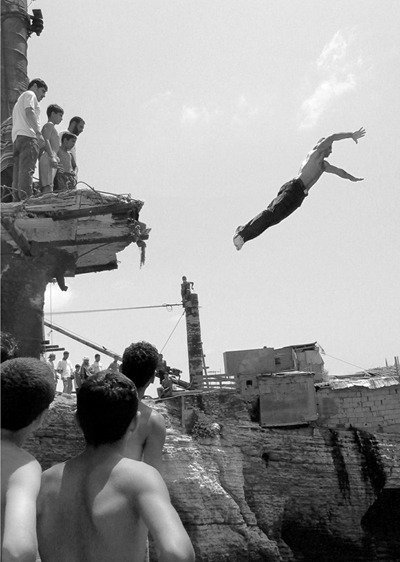Open Wounds
dal 17/3/2013 al 24/4/2013
Segnalato da
17/3/2013
Open Wounds
The Empty Quarter Gallery, Dubai
George Awde, Rhea Karam, Sirine Fattouh, Rima Maroun and Randa Mirza grow up with war and build their vision of the world from it, even in the exile phases that push their families abroad. War is a formative aspect of their individual paths.

When civil war brakes out in Lebanon in 1975,George Awde, Rhea Karam, Sirine Fattouh, Rima Maroun and Randa Mirza, are not yet born. This will happen a few years later when the country is devastated, buried under the bombardments of different militias. As children, then teenagers, they will know their country only through this predicament. War is part of their daily landscape. They grow up with war and build their vision of the world from it, even in the exile phases that push their families abroad. War is a formative aspect of their individual paths. In 1991, the signing of amnesty marks a new episode where reconstruction and the affirmation of a return to normalcy are on the program. Awde, Karam, Fattouh, Maroun and Mirza grow up and find inspiration to create. Instability is the common experience they re-live over and over.
What are the artist born between 1975 and 1991 working on?
They make the wounds of war speak without ever showing them. They select and capture fragments of lives and cities while keeping in mind their experience of war in today’s context. The superposition of these two frameworks - their lived and present lives - the temporal lag leaves marks of animosity and resentment on their photography.
Two of these artists’ photographs frame walls. With Karam, the wall is autonomous. It is life, it breaths, interacts and evolves. It speaks. And when it is silent, it evokes muffled voices and persistent tensions. With Maroun, the wall is obstacle. As the mediatized images of war show violence and decomposed bodies, Maroun’s photographs avoid the gaze of children, turning away from the intensity and emotion of the image.
Instead of the bi-dimensionality of the wall, Mirza is interested in space. In Beirutopia, she questions the becoming of the city in reconstruction, its identity and its representations. What seems at first glance to be the urban landscape is nothing more than publicity placards placed by real estate promoters, a projection of the city. In these photos, Mirza plays on the superposition of two scales: she frames those placards and subtly includes real elements to divert the spectator’s gaze.
The superposition of two layers - is exposed in the intimate dimension of the bedroom which is reprised in the photographs of Awde, where the notion of a subjected daily routine is brought to the fore, at once moving and sorrowful. The protagonists, all men, refugees or immigrants, live in precariousness.
As for Fattouh, she gathers the stories of a hundred women from the four corners of the country, from different classes, urban and rural settings, and diverse confessional and sociocultural backgrounds. “What did you gain” and “What did you loose” are the two broad questions that enable those who are outside history, without speech, to transmit an otherwise silent world.
All in all, whether these works are based on fiction or testimony, they are spatial anchors, spaces of stability. Sociocultural fractures appear, surely, but the artists reveal mostly the way in which these particular stories are unique explorative narratives of what is left unsaid.
Image: Open Wounds*, Randa Mirza: Series Pigeon's Rock, Pigeon's Rock 01, 2003. 40 x 40 cm, Edition: 5/10. Archival print on Fine art paper
Opening Reception on Monday 18th, from 7pm to 10pm
The Empty Quarter Gallery
Gate Village, Bldg 02 P.O.BOX 506697 - DIFC Dubai, UAE
Opening Times
Sunday - Thursday, 10.00 am - 10.00 pm
Saturday 2.00 pm - 8.00 pm



